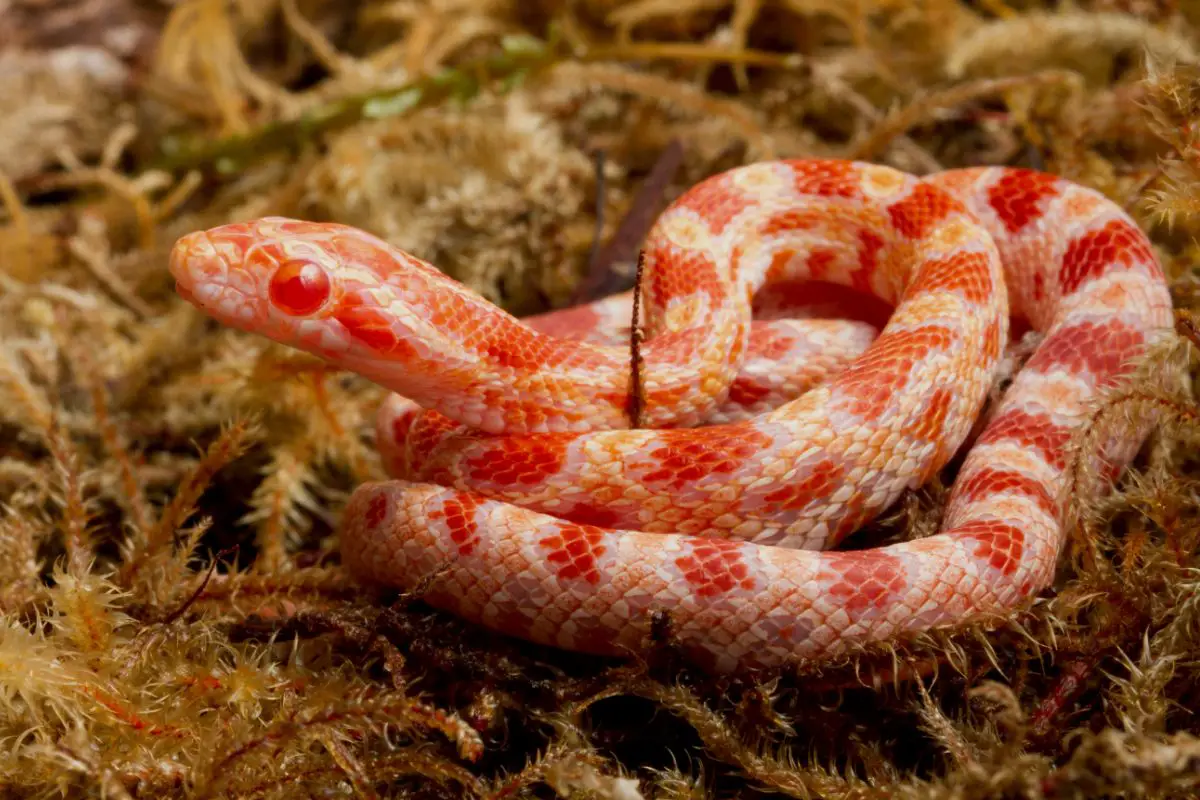Even though salamanders look a lot like lizards, they’re actually amphibians! There are over 650 species of salamander that can be found in the wild today. Creatures like newts and axolotl are a part of the salamander group.
While salamanders aren’t found in as many homes as cats or dogs, they’re still popular pets. If you’re interested in a pet salamander, you probably have some questions. Read on to learn more about keeping a salamander as a pet.
Key Takeaways:
- Since salamanders have delicate skin, they should only be held when necessary
- It’s best for salamanders to have a varied diet that includes several types of insects and invertebrates
- Some salamanders are fully aquatic and live in the water, but others spend the majority of their time on land
- Salamanders can release toxins through their skin
- Certain species, like the tiger salamander, eastern newt, and axolotl, are easier to care for than others
Are Salamanders Good Pets?
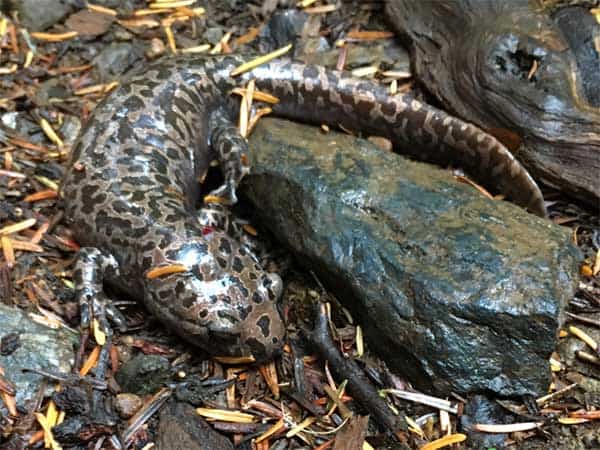
Salamanders aren’t the most popular type of pet, but some exotic pet owners choose to keep them. Many species will thrive when housed correctly and make great pets for the right types of owners.
However, these amphibians have thin and delicate skin that can easily be damaged. It’s recommended that pet owners try to avoid handling salamanders, making this creature a hands-off pet.
With that said, there are species of salamander that are happy to engage with their owners, including ribbed newts, tiger salamanders, and fire salamanders. In fact, these amphibians will even eat directly from their owner’s hand! Salamanders eat a varied diet in the wild, and it’s best to mimic that when you keep one as a pet.
A salamander’s diet can include crickets, earthworms, beetles, hornworms, and other insects and invertebrates. Some species of salamander, like spotted salamanders, strongly prefer live food, while others will eat chopped and frozen food and even some dry food. An adult salamander should be fed two to three times per week.
A salamander isn’t the best pet if you’re looking for a pet you can cuddle and play with, but if you want an interesting exotic pet you can watch in a tank, these amphibians are a terrific option. Many species are easy to care for, even for beginner pet owners, and can thrive in a clean tank.
Is It Safe to Touch a Salamander?
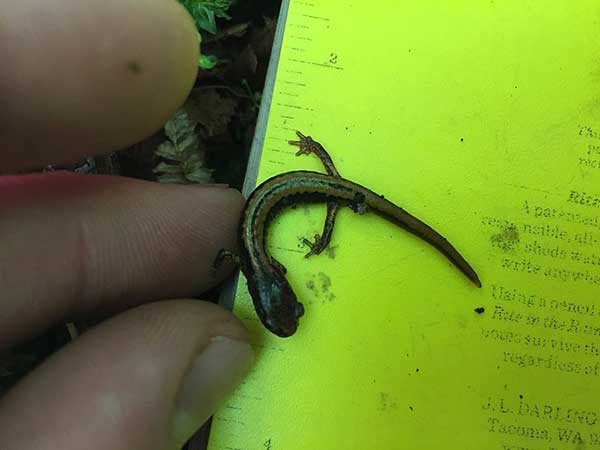
Salamanders can be safely held, but you’ll have to take precautions to prevent harm to yourself and the salamander. Since salamanders have permeable skin, they can absorb oils and bacteria on your hands. Wearing clean, powder-free gloves can help to protect the salamander.
In addition, salamanders can secrete toxins from their skin when they’re under threat. Not only can these toxins irritate the skin, but they can make you ill if they’re ingested. If you ever touch a salamander with your bare hands, you should make sure you scrub your hands clean immediately afterward.
Along with these toxins, salamanders can be carriers for salmonella, a type of bacteria that’s typically found on uncooked foods. Salmonella poisoning can cause serious illnesses in humans and often results in health complications. For these reasons and others, it’s best to only handle salamanders when it’s completely necessary.
Do Salamanders Bite?
Since salamanders are able to release toxins through their skin, they usually won’t bite even if they believe that they’re under threat. However, in rare cases, a salamander may bite its owner if it thinks the owner’s hand is food. This is more likely to happen when a salamander is very hungry.
Salamanders have sharp teeth that they can use to tear open prey, but in most species, these teeth are less than a millimeter long. Since the amphibian’s teeth are so small, it’s unlikely that the teeth will break the skin if a salamander does bite its owner. A salamander bite isn’t dangerous, but you should still clean the wound and take steps to prevent infection.
What Are the Best Salamander Species to Keep as Pets?
Since there are hundreds of different salamander species, it’s important to choose the right type of salamander when adopting a new pet. If you’ve owned a salamander before, you should choose a hardy species that are easy to care for. Some of the best salamander species to keep as pets include:
1. Tiger Salamanders
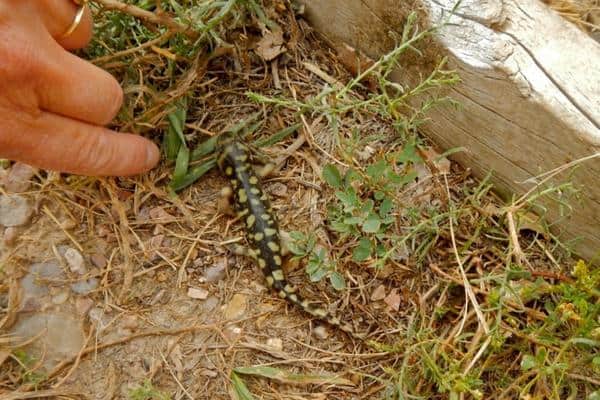
Tiger salamanders are one of the most popular salamander species to keep as pets thanks to their bold coloring and outgoing personalities. Since it’s a terrestrial salamander, it should be kept in a tank with water and topsoil. Over time, tiger salamanders will learn to recognize and interact with their owners.
2. Axolotl
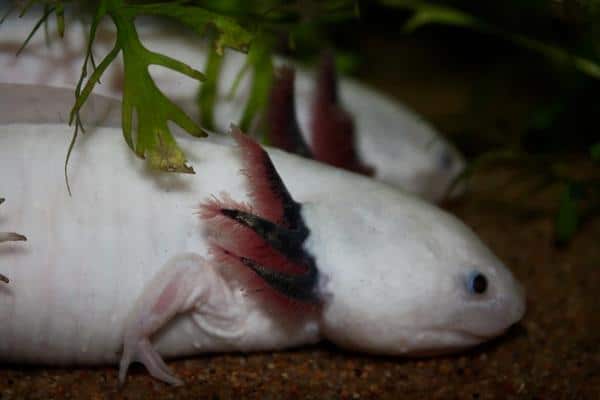
Many people are drawn to these salamanders because of their unusual features, like feathery gills and a dorsal fin. This is a fully aquatic salamander species that spends its entire life in the water. Axolotls will eat live, chopped, and dry food. Since axolotls will attack other amphibians, it’s best not to have multiple axolotls in the same tank.
3. Newt
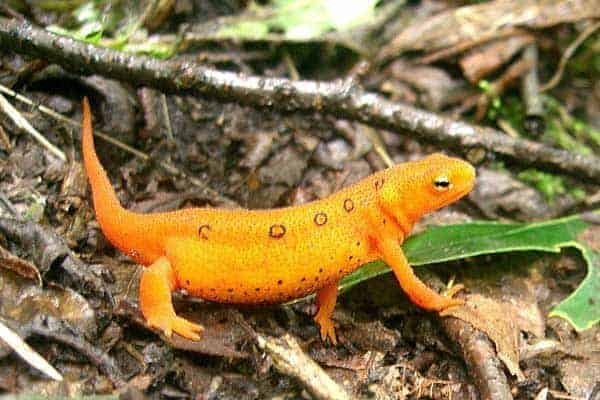
This brightly colored newt usually measures between 3 and 5 inches when fully grown, making it a tiny pet. Since the eastern newt is so small, it can be kept in smaller tanks and even in water bowls. It’s best to keep an eastern newt in a semi-aquatic enclosure where it can swim in the water and spend time on land.
4. Dunn’s Salamander
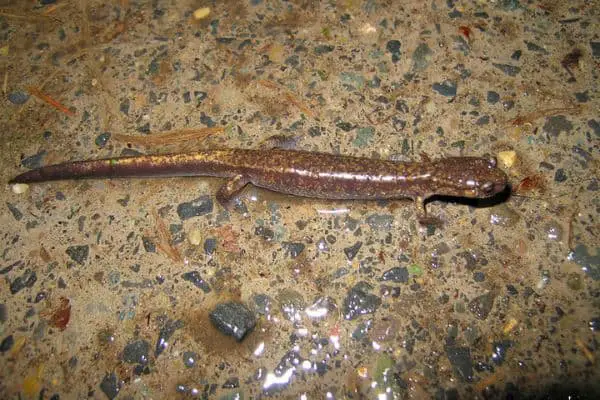
The Dunn’s salamander is native to Japan and is known for being easy to care for. While most of these salamanders have olive green skin, there are some Dunn’s salamanders with iridescent blue markings.
This amphibian prefers to spend most of its time on land but likes to eat in the water. Since these salamanders love to hide, you may not always be able to spot your salamander in its tank.
5. Marbled Salamander

This is a stocky salamander that usually measures around five inches when it’s fully grown. The marbled salamander loves to burrow underground, which is why it’s sometimes referred to as a mole salamander! If you place the salamander in a tank with moistened paper towels, you can actually watch it burrow.
Conclusion
Salamanders are beginner-friendly pets that are easy to care for. While salamanders can be fun to look at, they have delicate skin that can release toxins, which means they shouldn’t be held very often. If you do choose to keep a pet salamander, make sure you feed the amphibian plenty of food so that it can get all the nutrients that it needs.

